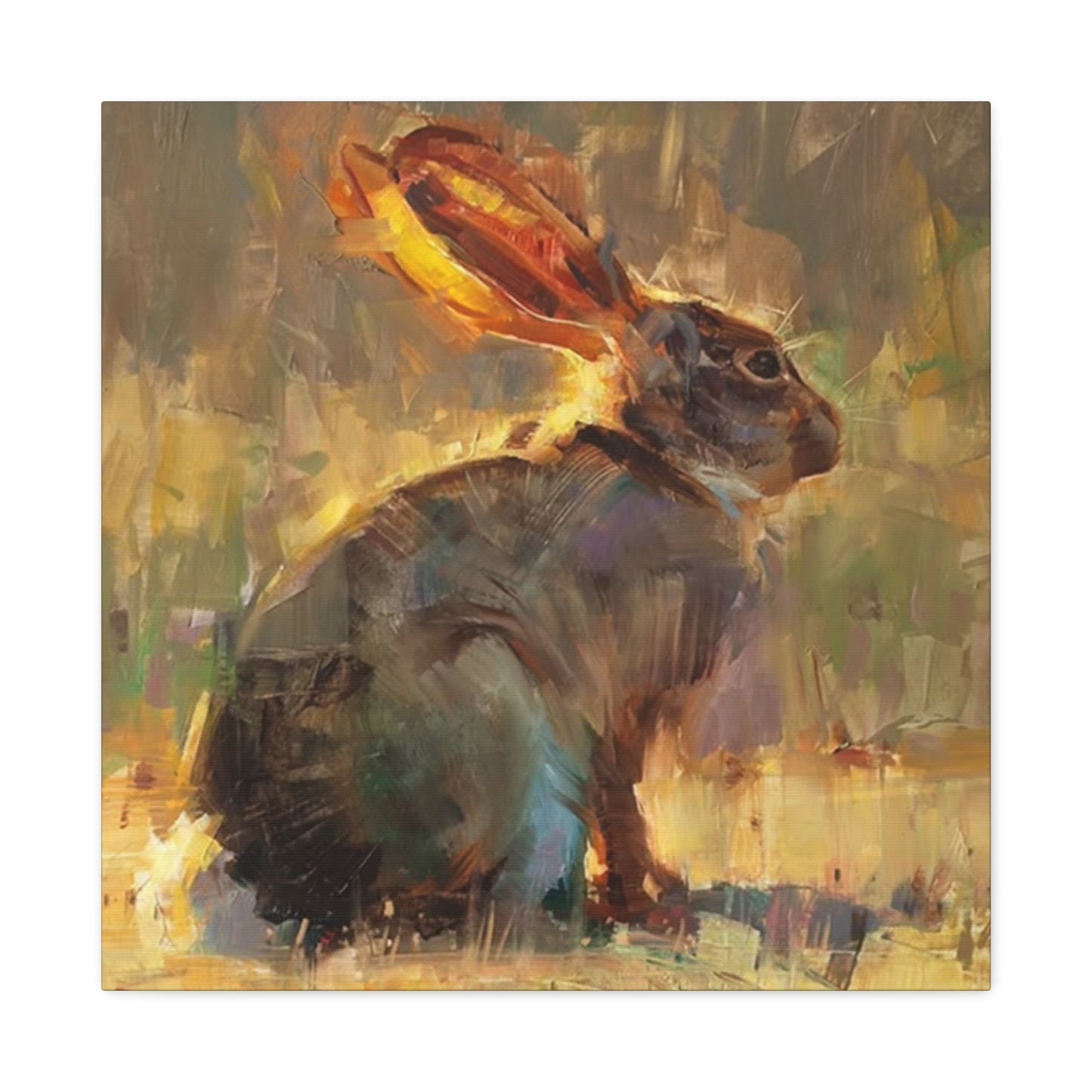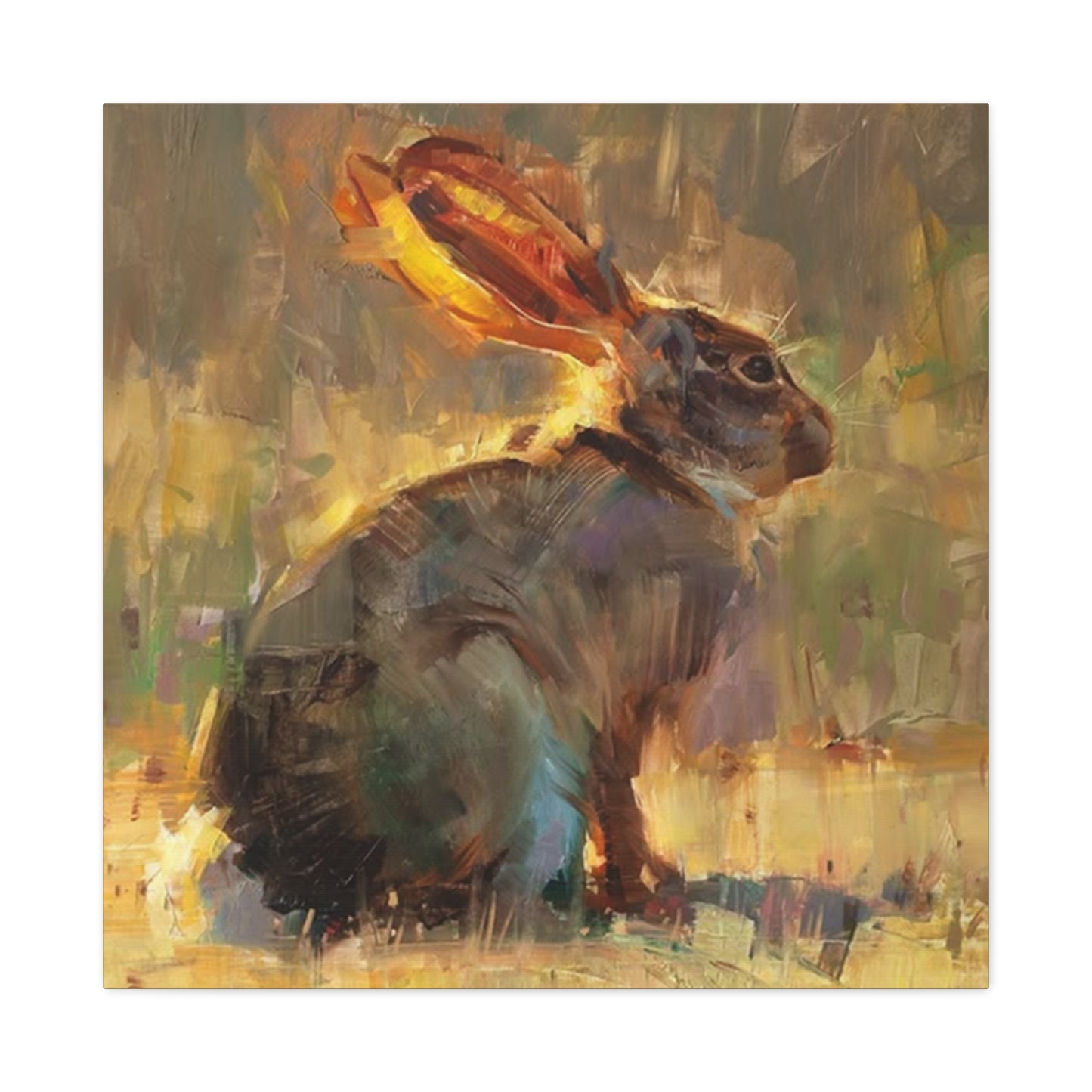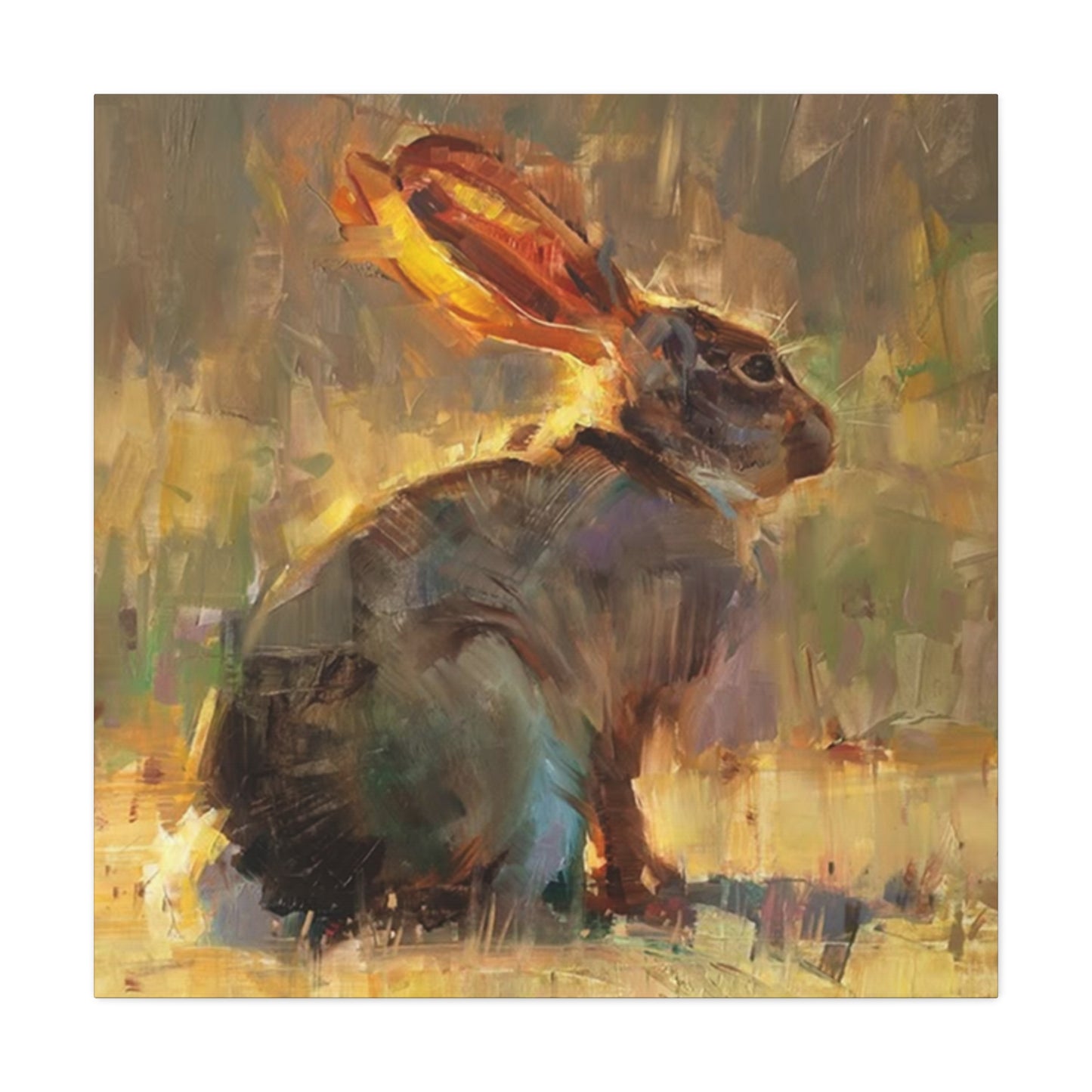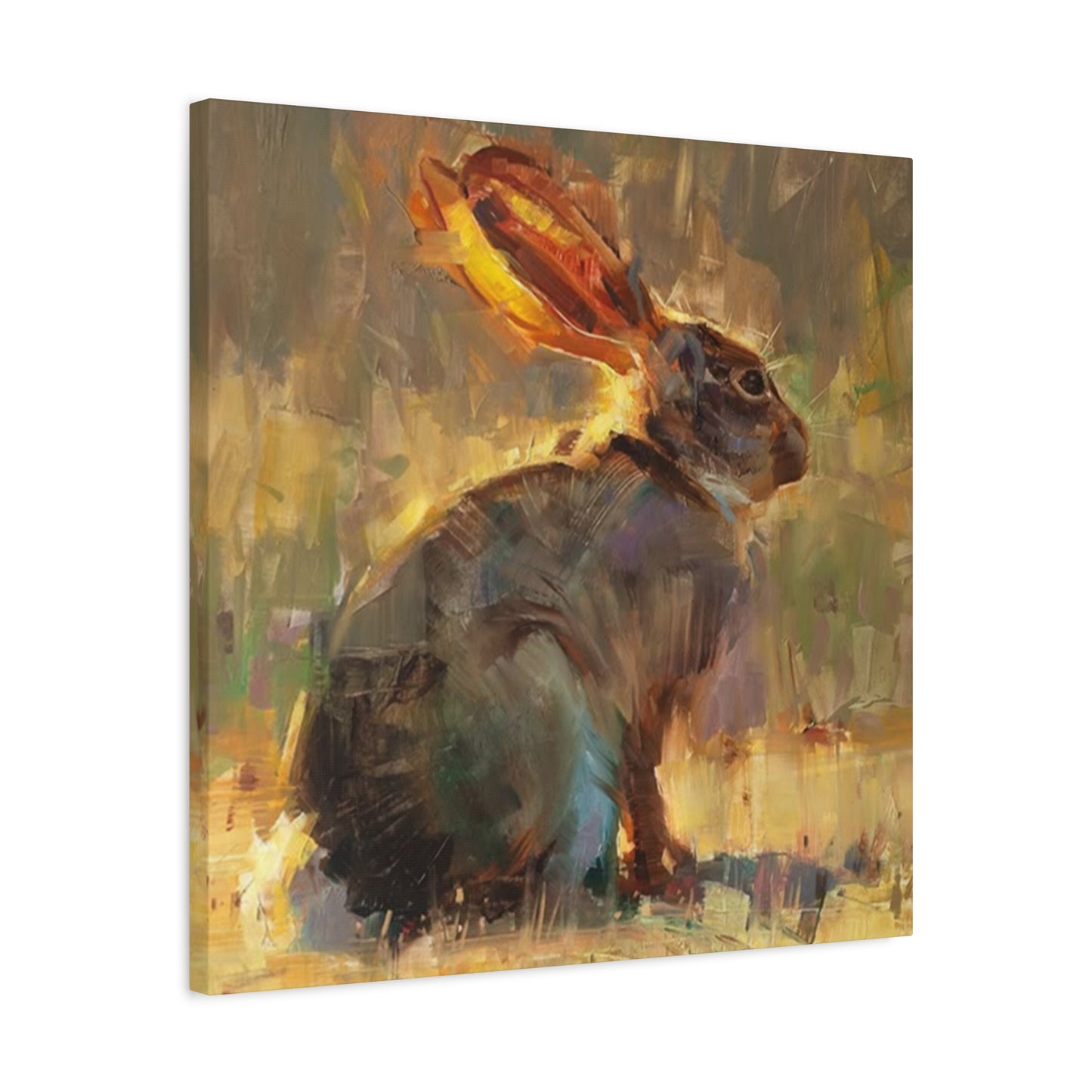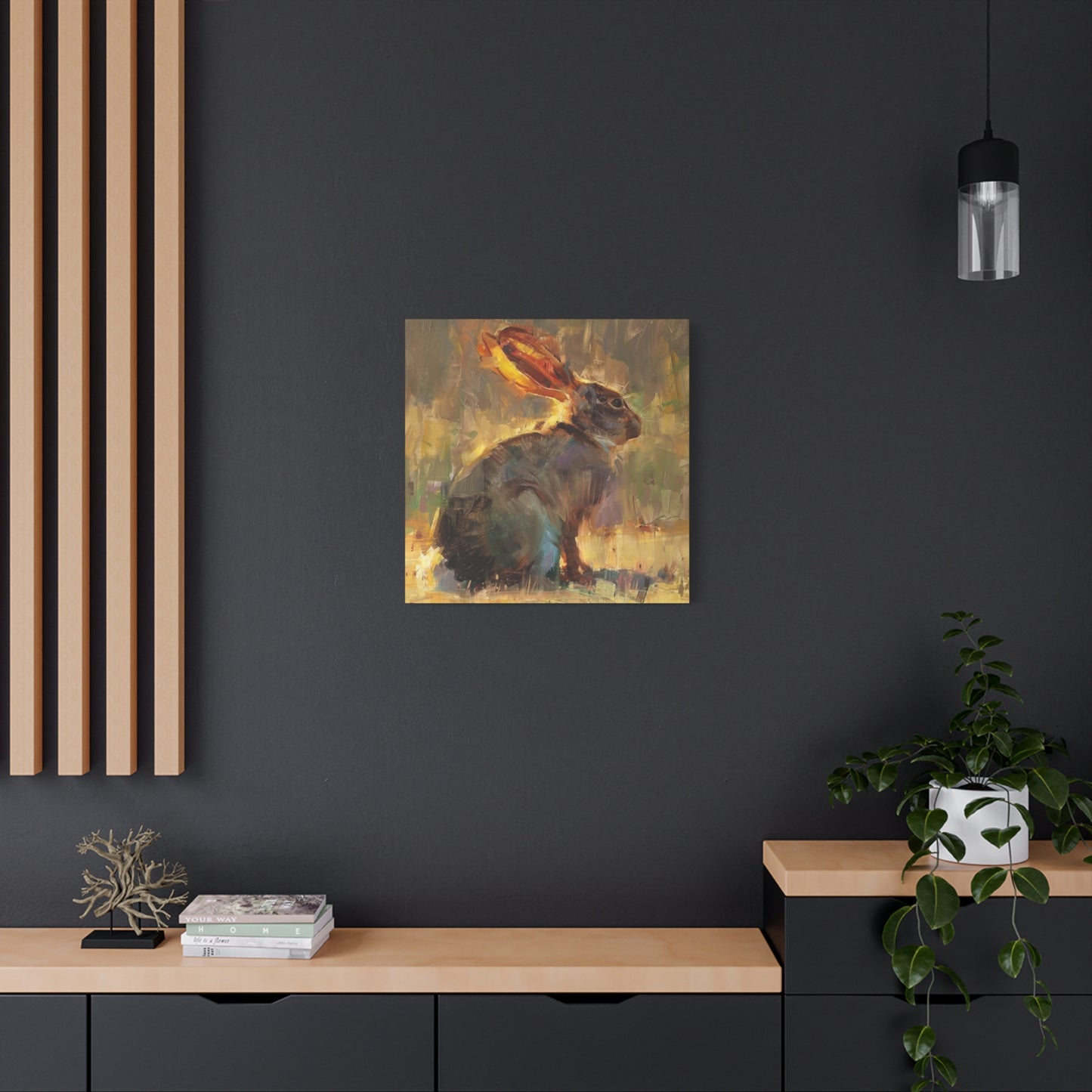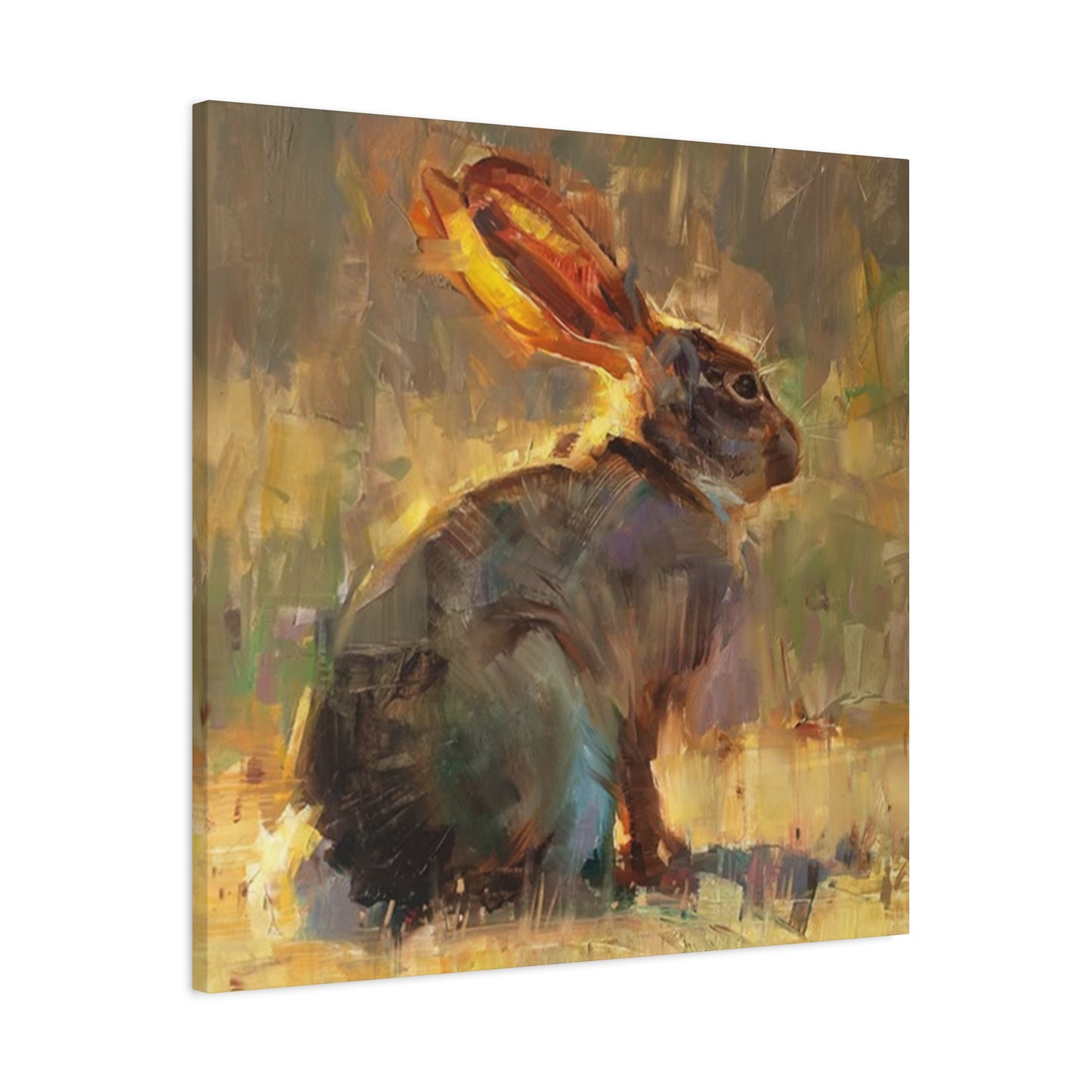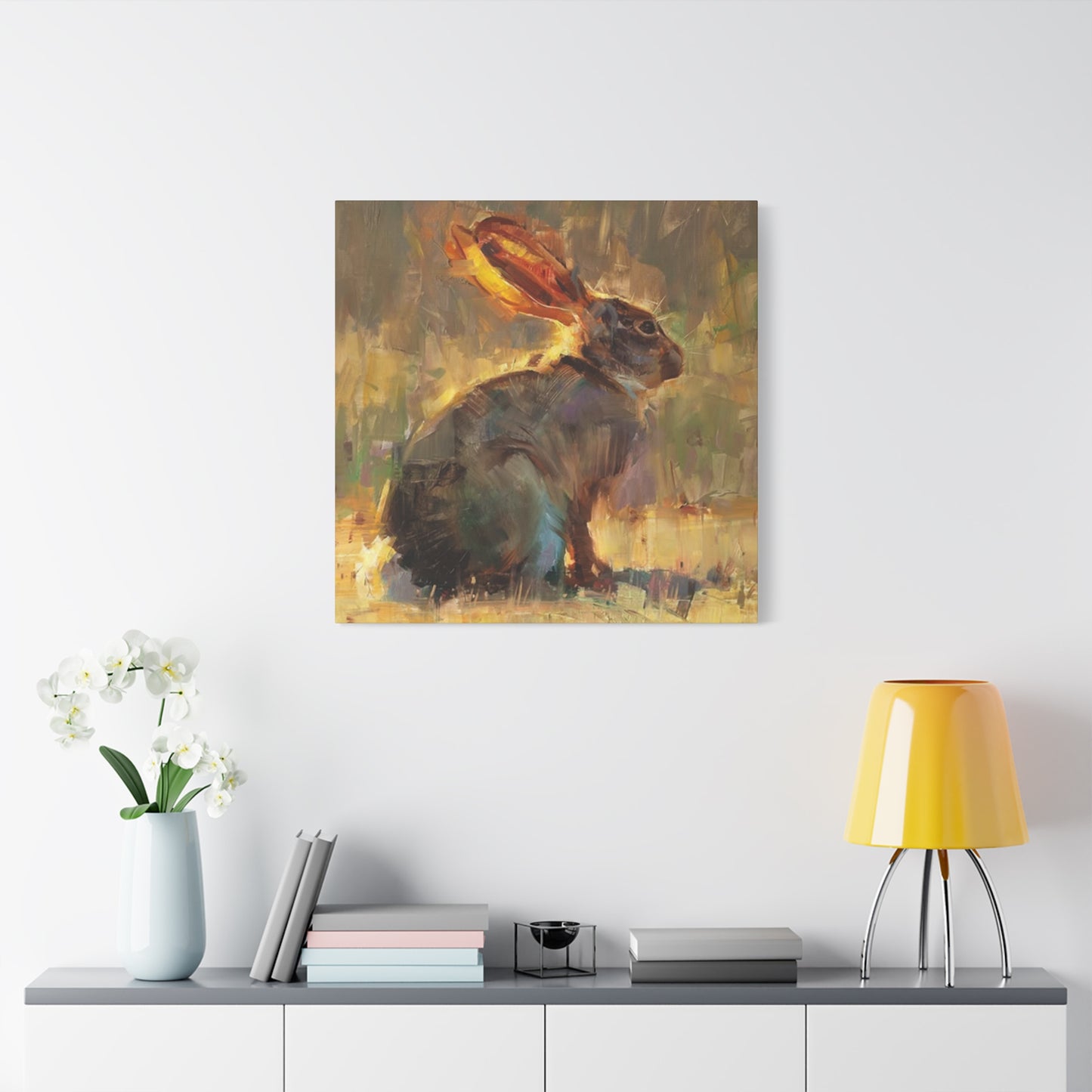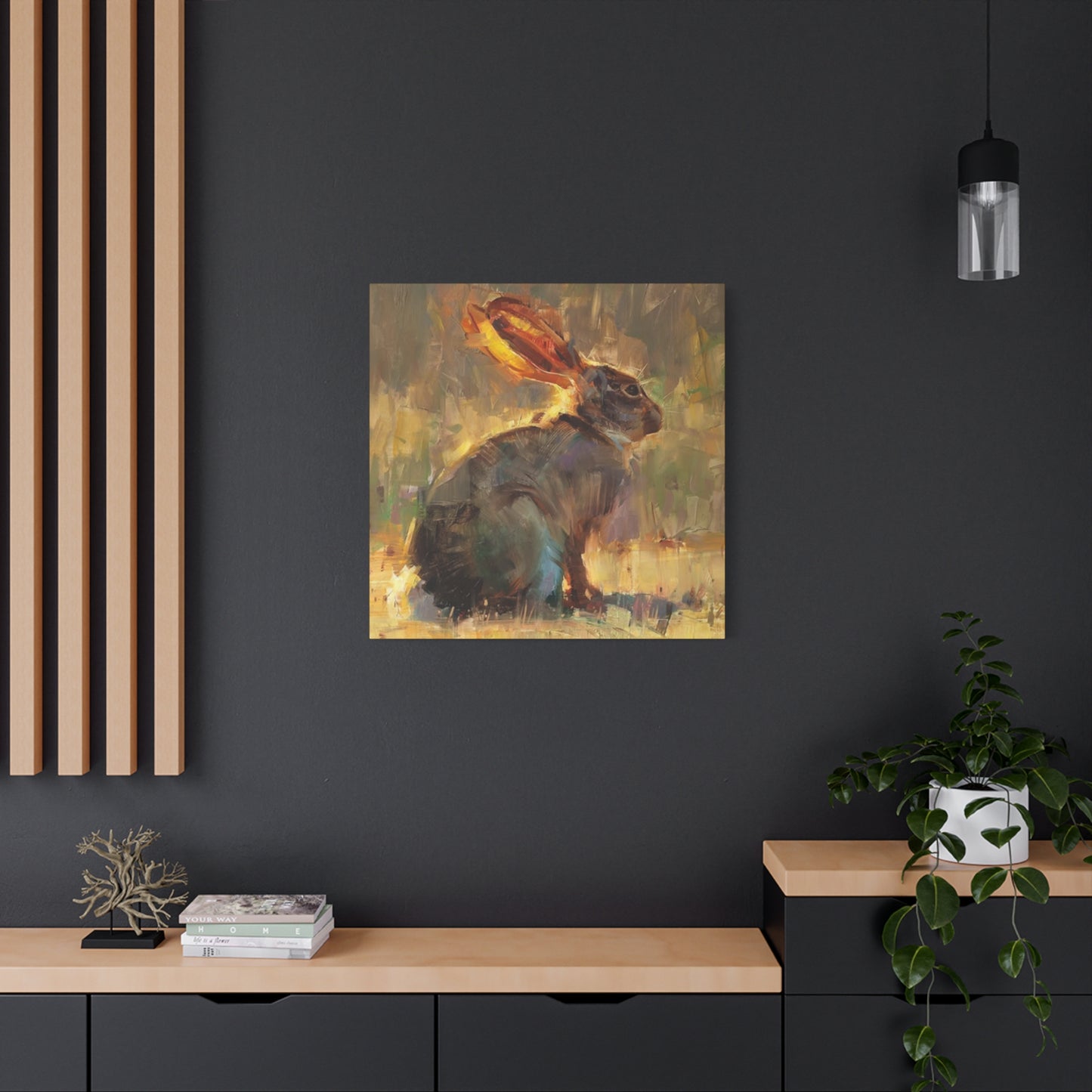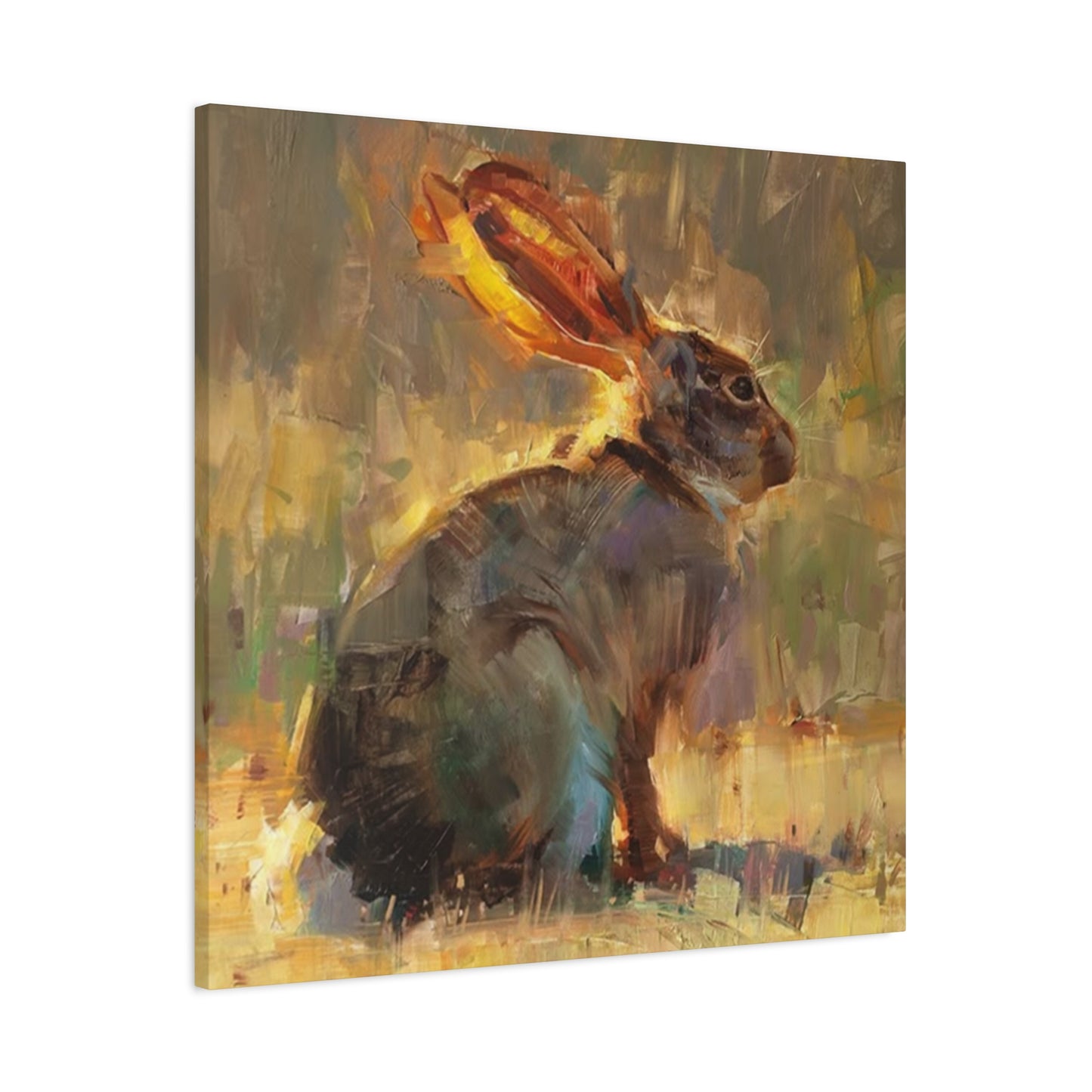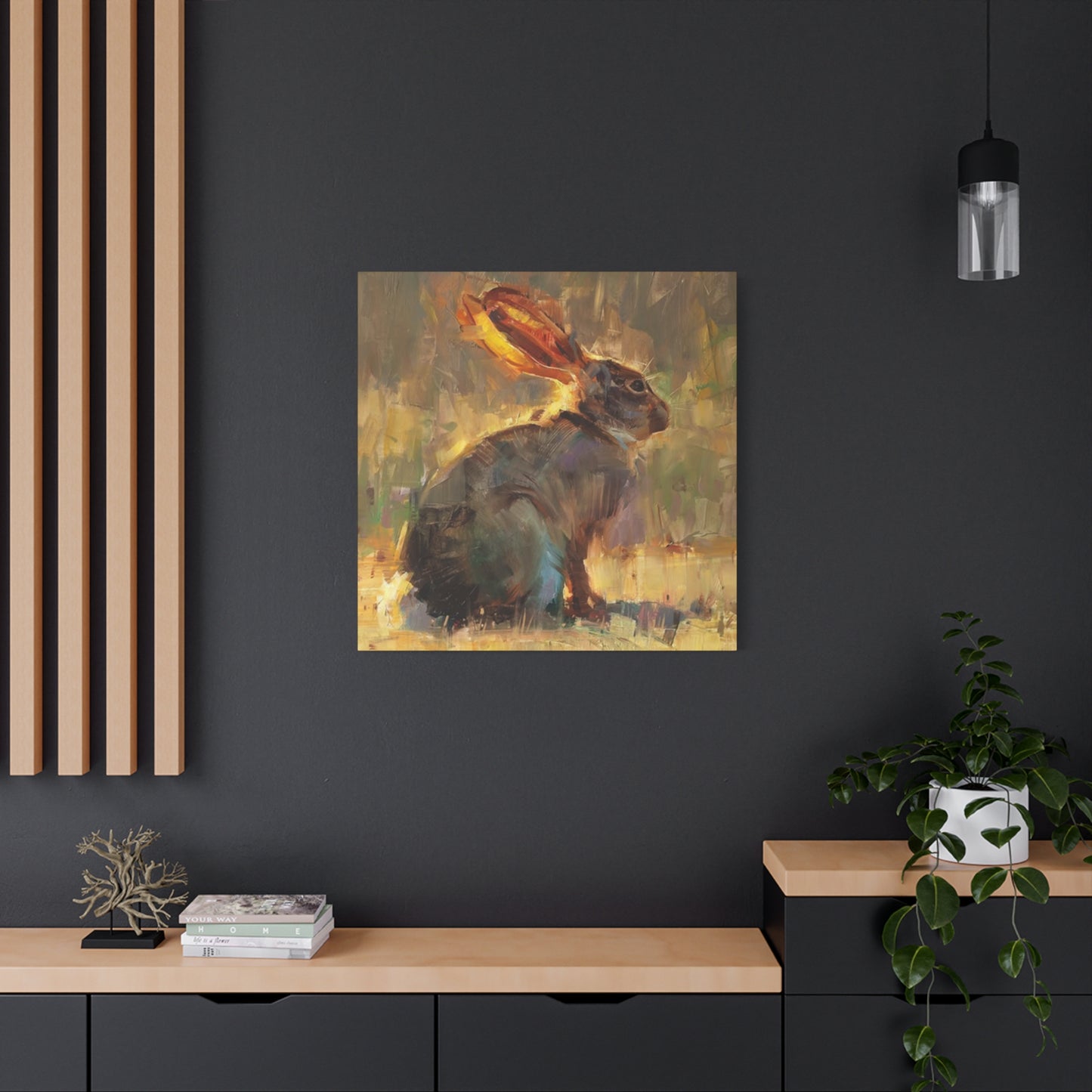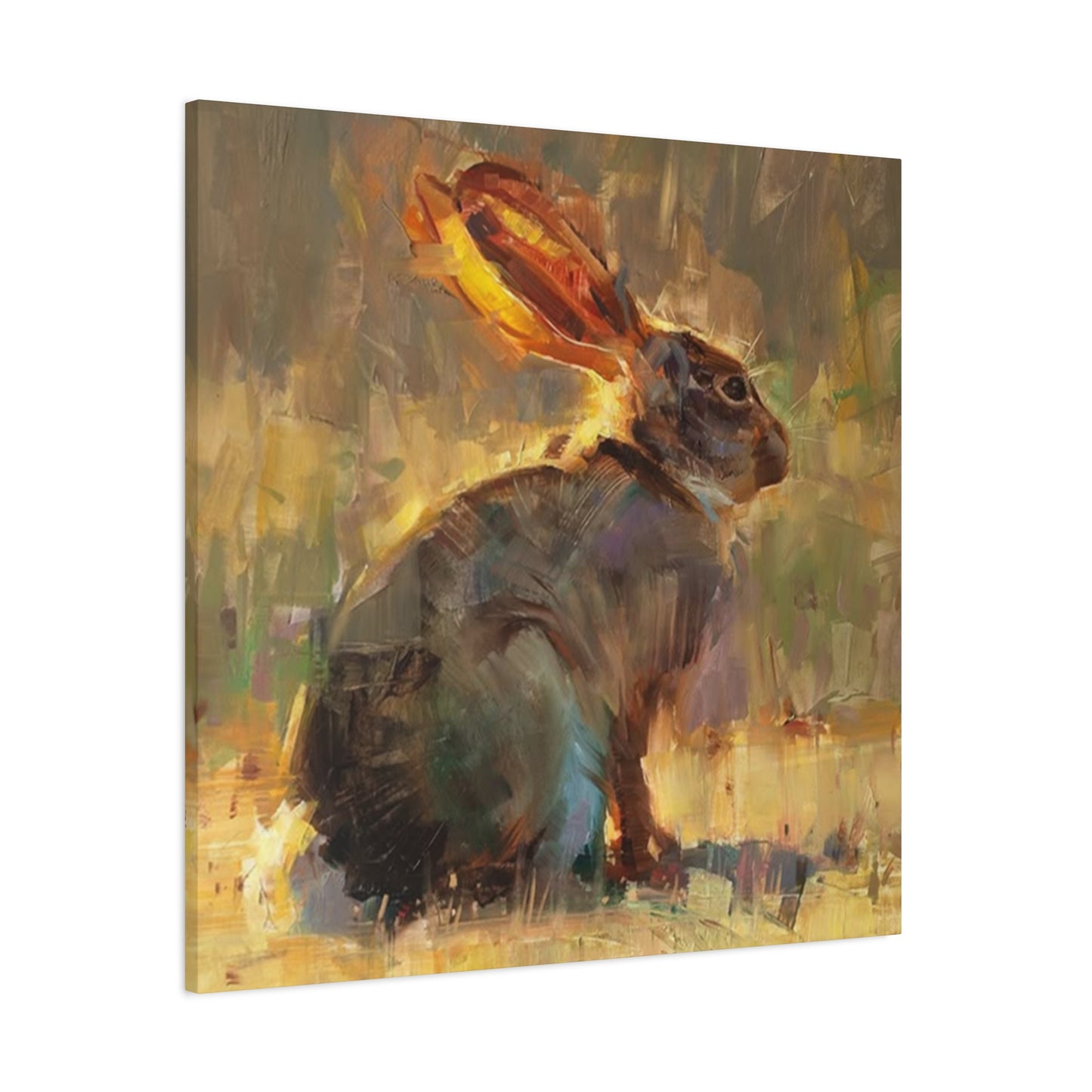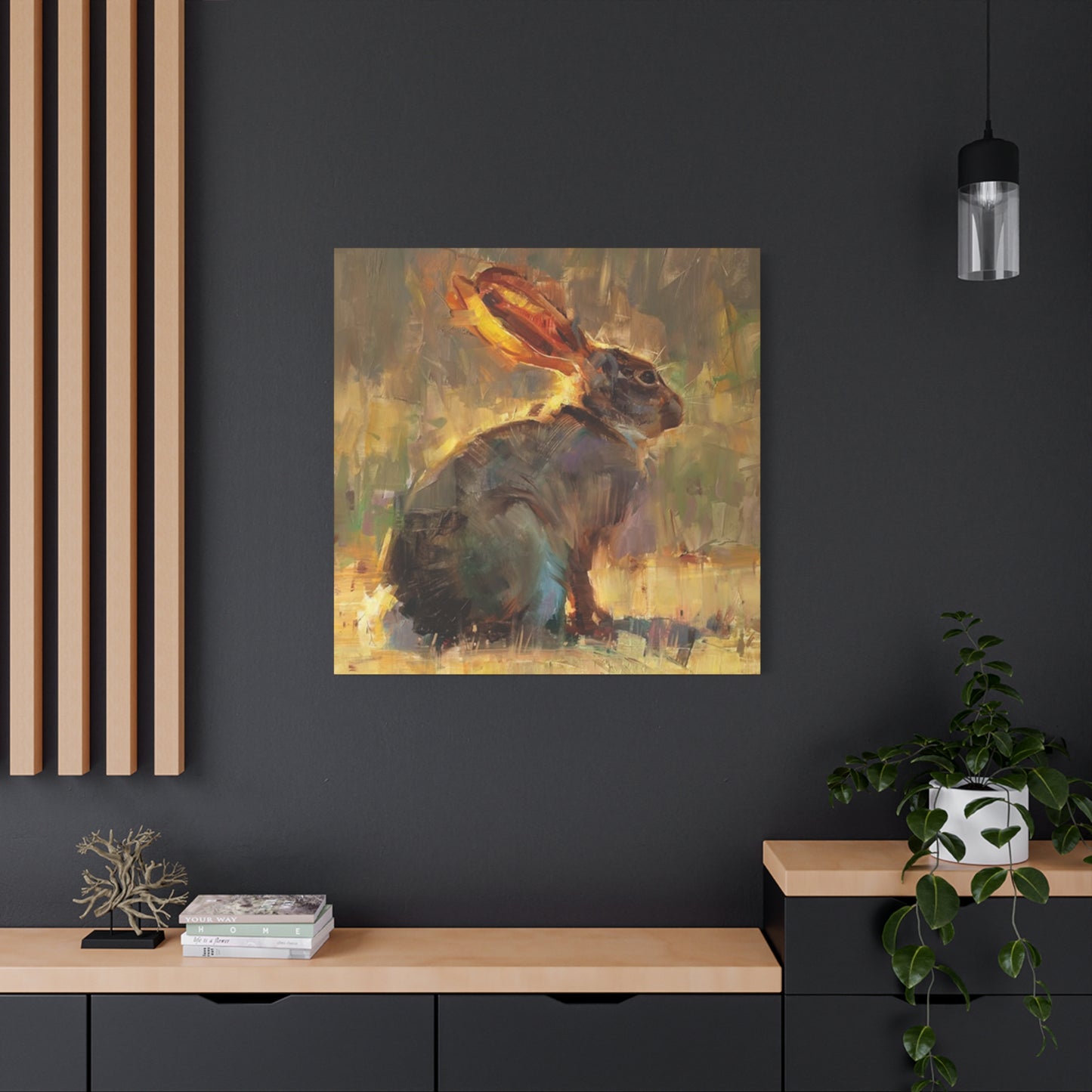Brown Bunny Wall Art: Exploring the Charm and Appeal of Rabbit-Themed Wall Decorations
The world of interior design has witnessed a remarkable surge in the popularity of animal-themed artwork, with rabbit motifs emerging as particularly beloved choices for contemporary homes. Among these, brown bunny paintings have captured the hearts of decorators and art enthusiasts alike, offering a perfect blend of natural warmth, gentle aesthetics, and versatile styling possibilities. These artistic representations bring an element of nature indoors while maintaining sophistication and charm that appeals to diverse tastes and design preferences.
Brown bunny wall art represents more than just decorative pieces; they embody a connection to nature, childhood memories, and the simple pleasures that rabbits symbolize across various cultures. The earthy tones of brown rabbits provide a neutral yet engaging focal point that complements numerous interior design schemes, from rustic farmhouse aesthetics to modern minimalist spaces. This versatility has contributed significantly to their widespread adoption in homes, nurseries, living spaces, and even professional environments seeking to create welcoming atmospheres.
The appeal of rabbit-themed artwork extends beyond mere decoration. These pieces often evoke feelings of tranquility, innocence, and pastoral beauty that resonate deeply with viewers. Whether rendered in realistic detail or interpreted through abstract artistic styles, brown bunny paintings carry an inherent gentleness that transforms spaces into havens of calm and comfort. The choice of brown as the predominant color adds an organic, grounded quality that feels both timeless and contemporary.
Throughout this exploration, we will delve into the multifaceted world of brown bunny wall art, examining the artistic techniques employed in their creation, the psychological impact of such imagery in living spaces, and the various ways these pieces can be incorporated into different design aesthetics. We will also explore the cultural significance of rabbits in art, the practical considerations for selecting and displaying these works, and the growing market for rabbit-themed decorative pieces in contemporary interior design.
The Artistic Appeal of Rabbit Imagery in Contemporary Decor
Rabbit imagery has maintained a consistent presence in artistic expression throughout human civilization, evolving from ancient symbolic representations to modern decorative art forms. The contemporary fascination with brown bunny paintings reflects a broader trend toward incorporating nature-inspired elements into interior spaces, creating environments that feel connected to the natural world despite increasingly urban lifestyles. Artists working with rabbit subjects often emphasize the creatures' distinctive features including their expressive eyes, soft fur textures, and gentle demeanor, creating works that resonate emotionally with viewers.
The artistic rendering of brown bunnies allows for exploration of various techniques and styles. Realistic portrayals capture the intricate details of rabbit anatomy, from the delicate structure of their ears to the subtle variations in fur coloration. These detailed works appeal to nature enthusiasts and those who appreciate technical artistic skill. Meanwhile, stylized interpretations offer simplified forms that emphasize the essential characteristics of rabbits, creating images that work well in modern, streamlined interiors where simplicity and clarity are valued.
Watercolor techniques prove particularly effective for depicting brown bunnies, as the medium's flowing, organic quality mirrors the soft, gentle nature of the subject. The translucent layers of watercolor can beautifully represent the subtle gradations in rabbit fur, creating depth and dimension while maintaining a light, airy quality that prevents the artwork from feeling heavy or overwhelming in a space. Many artists favor this medium for creating rabbit artwork that feels approachable and warm.
Oil paintings of brown bunnies offer richness and depth that other mediums struggle to achieve. The ability to build up layers of paint creates texture that can almost replicate the feel of rabbit fur, while the luminosity of oil paints brings life to the eyes and highlights. These works often become statement pieces, commanding attention while still maintaining the gentle character inherent to rabbit subjects. The permanence and traditional prestige associated with oil painting also adds value to these artworks as investment pieces.
Acrylic paints provide versatility for rabbit-themed artwork, allowing artists to work in both thin, watercolor-like washes and thick, textured applications. This flexibility makes acrylics popular among contemporary artists creating brown bunny wall art for diverse markets. The quick-drying nature of acrylics facilitates layering and experimentation, enabling artists to develop unique styles that set their rabbit artwork apart in an increasingly competitive market.
Digital illustration has opened new possibilities for brown bunny artwork, allowing for precise control and endless iterations. Digital artists can create highly polished works with perfect symmetry or incorporate photographic elements for hybrid compositions. The ease of reproduction makes digitally created rabbit art accessible and affordable, democratizing art ownership and allowing more people to incorporate these charming images into their homes.
Stylistic Variations in Brown Bunny Wall Art
Brown bunny wall art encompasses remarkable stylistic diversity, ranging from photorealistic renderings to highly abstract interpretations. This variety ensures that rabbit enthusiasts can find artwork matching their personal aesthetic preferences and existing interior design schemes. Realistic styles appeal to those who appreciate technical skill and accurate natural representation, capturing every detail from whisker placement to the precise gradation of fur colors across the rabbit's body.
Impressionistic approaches to brown bunny artwork prioritize capturing the essence and feeling of the subject over precise detail. These works use loose brushwork and emphasis on light and color to create atmospheric pieces that evoke emotion rather than document reality. The softer focus of impressionistic rabbit art creates dreamlike qualities that work beautifully in spaces designed for relaxation and contemplation, such as bedrooms or reading nooks.
Modern minimalist interpretations reduce the brown bunny to its essential forms, using simple shapes and limited color palettes to create striking contemporary pieces. These simplified rabbits often appear in profile or three-quarter view, with clean lines and geometric influences. The restraint of minimalist rabbit art makes it particularly suitable for modern interiors where clutter and visual complexity are minimized in favor of intentional, carefully curated elements.
Vintage-inspired brown bunny artwork draws from earlier artistic traditions, incorporating elements from botanical illustrations, Victorian-era paintings, or mid-century design aesthetics. These nostalgic pieces appeal to those who appreciate historical design sensibilities and wish to create interiors with timeless character. The aged quality of vintage-style rabbit art adds instant history to newer homes, creating layers of visual interest and personality.
Abstract interpretations of brown bunny subjects push boundaries by deconstructing rabbit forms into shapes, colors, and patterns that suggest rather than depict. These innovative works challenge viewers to engage more actively with the artwork, finding the bunny within the abstraction. Such pieces appeal to art collectors and design enthusiasts who prefer thought-provoking pieces that serve as conversation starters while maintaining the essential charm of the rabbit subject.
Folk art and naive styles bring playful, unpretentious qualities to brown bunny wall art. These approaches often feature simplified forms, flat perspectives, and bold outlines reminiscent of children's book illustrations. The accessibility and warmth of folk-style rabbit artwork makes it particularly popular for children's spaces, though many adults appreciate these styles for their honesty and joyful simplicity in any room of the house.
Selecting the Perfect Brown Bunny Artwork for Different Spaces
Choosing appropriate brown bunny wall art requires consideration of multiple factors including room function, existing decor, available wall space, and desired emotional atmosphere. Living rooms, serving as central gathering spaces, benefit from larger statement pieces that can anchor seating arrangements and create focal points. A substantial brown bunny painting positioned above a sofa or fireplace mantel establishes presence without overwhelming, particularly when the artwork's tones complement the room's existing color scheme.
Bedrooms present ideal opportunities for incorporating calming brown bunny artwork that promotes relaxation and peaceful sleep. The gentle nature of rabbit imagery combined with soothing brown tones creates environments conducive to rest and rejuvenation. Placement opposite the bed ensures the artwork is visible upon waking, starting each day with the comforting presence of the gentle bunny image. Pairs or series of rabbit artworks can flank a bed, creating balanced, harmonious arrangements.
Nurseries and children's rooms have long been popular locations for rabbit-themed artwork, with brown bunnies offering gender-neutral options that appeal across age ranges. The innocent, nurturing associations of rabbits make them appropriate companions for young children, while the sophistication of quality artwork ensures the pieces can grow with the child rather than requiring replacement as tastes mature. Multiple smaller brown bunny artworks can create gallery walls that add visual interest without requiring perfect spacing, as the unified theme ties the arrangement together.
Hallways and transitional spaces often go neglected in decorating plans, yet these areas offer excellent opportunities for incorporating brown bunny wall art. A series of smaller rabbit artworks creates visual rhythm that guides movement through the space, while a single larger piece can transform a blank hallway wall into an unexpected delight. The neutral brown tones work particularly well in these spaces, which often lack the consistent lighting of primary rooms.
Home offices and workspaces benefit from the calming presence of brown bunny artwork, providing visual respites from work-related stress. The gentle nature of rabbit imagery offers mental breaks without the distraction of overly complex or stimulating artwork. Positioning brown bunny art within the line of sight from a desk allows for brief meditative moments that can refresh focus and creativity throughout the workday.
Bathrooms, though sometimes overlooked for meaningful artwork, can be transformed by carefully selected brown bunny pieces. Moisture-resistant prints or properly sealed canvases withstand bathroom conditions while adding personality to these functional spaces. The organic brown tones complement natural materials often found in bathrooms, such as wood vanities, stone tiles, and woven textiles, creating cohesive, spa-like environments.
Materials and Mediums Used in Creating Brown Bunny Wall Art
The physical materials and artistic mediums employed in creating brown bunny wall art significantly impact the final aesthetic, durability, and value of the pieces. Canvas remains the most popular support for painted rabbit artwork, offering texture that adds dimension while providing durability and professional presentation. Stretched canvas creates gallery-ready pieces that can be hung without additional framing, appealing to those preferring clean, modern presentations. The cotton or linen fibers of quality canvas accept various paint mediums beautifully, from traditional oils to contemporary acrylics.
Paper supports offer distinct advantages for certain artistic approaches to brown bunny artwork. Watercolor papers with their specific textures and absorbencies allow artists to create luminous, translucent effects that perfectly capture the delicate quality of rabbit subjects. Heavy-weight watercolor paper withstands multiple layers and techniques without buckling, ensuring the finished artwork maintains its integrity over time. Matting and framing behind glass protects these more fragile works while adding formal presentation value.
Wood panels provide rigid supports that appeal to artists working in mixed media or those desiring perfectly flat surfaces. The smooth, non-flexible surface of properly prepared wood panels allows for extremely detailed work and supports techniques like wood burning or carving combined with painted elements. Brown bunny artwork on wood panels carries rustic, artisanal qualities that complement farmhouse and cottage design aesthetics particularly well.
Metal prints represent modern approaches to reproducing brown bunny artwork, infusing images directly into specially coated aluminum sheets. This process creates vibrant, luminous pieces with exceptional color saturation and remarkable durability. Metal prints of rabbit artwork offer contemporary, gallery-quality presentations that work especially well in modern interiors where traditional canvas or framed works might feel out of place. The sleek, frameless presentation and lightweight nature of metal prints also simplifies installation.
Fabric printing technologies have enabled the creation of brown bunny wall art on tapestries, canvas prints, and other textile supports. These approaches create softer, more tactile artworks that can add textural interest to spaces dominated by hard surfaces. Fabric-based rabbit art often works well in casual spaces like family rooms or children's bedrooms where the less formal presentation feels appropriate and inviting.
Mixed media approaches combine multiple materials and techniques within single brown bunny artworks, creating pieces with exceptional visual interest and depth. Artists might combine painting with collage elements, incorporating actual natural materials like pressed flowers, handmade papers, or fabric textures. These layered works create dimensional viewing experiences where light and shadow play across the varied surfaces, ensuring the artwork reveals new details over time.
Framing and Presentation Options for Brown Bunny Artwork
Proper framing dramatically impacts how brown bunny wall art integrates into interior spaces and influences the overall impression the artwork creates. Traditional framing with matting provides formal, classic presentation particularly suitable for more realistic or vintage-style rabbit artwork. The mat creates visual breathing room around the image, preventing the frame from overwhelming the artwork while allowing the piece to command appropriate attention. Mat colors should complement both the artwork and surrounding decor, with neutral options like cream, white, or soft gray offering versatile choices.
Frame material and style selection requires balancing the artwork's character with the room's design aesthetic. Natural wood frames enhance the organic, nature-connected qualities of brown bunny subjects, with frame finish ranging from light natural woods to rich, dark stains. The grain and texture of wood frames add warmth that complements the brown tones of the rabbit subject. Metal frames offer sleek, contemporary alternatives particularly suitable for modern interpretations of rabbit imagery or spaces with industrial, minimalist, or eclectic design schemes.
Floating frames create the illusion that brown bunny artwork hovers within the frame, adding drama and contemporary flair. This presentation style works particularly well with canvas pieces, creating shadow effects that add dimension and visual interest. The gallery-quality appearance of floating frames elevates even simple rabbit artwork, making it feel more significant and intentional within the design scheme.
Gallery wrapping, where canvas extends around the sides of stretcher bars with the image continuing around the edges, eliminates framing needs entirely. This approach creates clean, modern presentations ideal for contemporary spaces where traditional frames might feel fussy or dated. Gallery-wrapped brown bunny canvases can be hung directly on walls, simplifying installation while creating seamless integration with minimalist or modern interiors.
Shadow box framing adds depth and dimension particularly appropriate for three-dimensional or mixed media brown bunny artwork. The space between the artwork and protective glazing creates dramatic shadow effects while accommodating pieces with actual dimensional elements. Shadow boxes work especially well for folk art or craft-style rabbit pieces incorporating fabric, buttons, or other tactile materials.
Ledge display systems offer flexible presentation options for brown bunny artwork, allowing easy rotation and rearrangement of pieces without wall damage from repeated hanging. Picture ledges can display single substantial rabbit artworks or create gallery arrangements of multiple smaller pieces. This approach particularly appeals to those who enjoy frequently refreshing their decor or who have collections of rabbit-themed artwork they wish to rotate seasonally.
Incorporating Brown Bunny Wall Art into Various Design Styles
Farmhouse design aesthetics naturally accommodate brown bunny wall art, with the rustic, countryside associations of both rabbits and earth tones aligning perfectly with this popular style. Distressed wood frames, vintage-inspired rabbit illustrations, and arrangements incorporating other natural elements create cohesive farmhouse presentations. Pairing brown bunny artwork with shiplap walls, reclaimed wood accents, and neutral color palettes establishes strong thematic consistency that defines successful farmhouse interiors.
Modern design schemes benefit from carefully selected brown bunny artwork that respects the clean lines and intentional simplicity defining this aesthetic. Minimalist interpretations of rabbit subjects, pieces with geometric influences, or sophisticated photographic approaches to bunny imagery can integrate beautifully into modern spaces. Frameless presentations, metal prints, or floating frames maintain the uncluttered appearance essential to modern design while allowing the gentle nature of rabbit subjects to soften potentially austere environments.
Scandinavian design principles emphasizing natural materials, functionality, and connection to nature create ideal contexts for brown bunny wall art. The neutral color palettes and appreciation for natural beauty characteristic of Scandinavian interiors complement brown rabbit imagery perfectly. Simple presentations without excessive ornamentation align with the understated elegance of this design approach, while the organic subject matter reinforces the nature-inspired foundations of Scandinavian style.
Bohemian or eclectic interiors, with their embrace of diverse influences and layered, collected aesthetics, easily accommodate brown bunny wall art within gallery walls or eclectic arrangements. The freedom of bohemian design allows for mixing various styles of rabbit artwork, from realistic to abstract, vintage to contemporary. Rich, warm browns of bunny subjects harmonize with the earthy, natural color palettes often found in boho spaces, while the gentle imagery provides visual rest within potentially busy, maximalist arrangements.
Cottage style interiors, with their cozy, comfortable, slightly nostalgic character, provide natural homes for brown bunny wall art. Vintage-inspired rabbit illustrations, folk art interpretations, or watercolor bunny paintings complement the soft, romantic qualities of cottage design. Floral patterns, distressed finishes, and collections of beloved objects that characterize cottage style create contexts where rabbit artwork feels perfectly at home, contributing to the overall sense of warmth and personality.
Traditional design schemes can successfully incorporate brown bunny wall art when presentations respect formal principles and quality expectations. Realistic oil paintings of rabbits in elaborate gilded frames can hold their own in traditional interiors alongside landscapes and classical still life paintings. The key lies in treating the rabbit subject with appropriate artistic seriousness and presenting it with the formality expected in traditional spaces, demonstrating that subject matter need not be grand to warrant dignified presentation.
The Growing Market for Rabbit-Themed Home Decor
The commercial market for brown bunny wall art has expanded significantly in recent years, reflecting broader consumer trends toward nature-inspired home decor and personalized living spaces. Independent artists selling through online marketplaces have democratized access to unique, often handcrafted rabbit artwork, allowing consumers to support individual creators while acquiring pieces with more character than mass-produced alternatives. These platforms enable artists specializing in rabbit subjects to find their audiences directly, bypassing traditional gallery systems.
Print-on-demand services have revolutionized the brown bunny wall art market by eliminating inventory requirements and enabling artists to offer their designs on multiple formats from small prints to large canvases. Consumers benefit from this technology through lower prices, instant availability, and options to obtain the same beloved rabbit design in various sizes to fit different spaces. The environmental advantages of print-on-demand, producing items only when ordered, also appeal to increasingly eco-conscious consumers.
Home decor retailers have responded to demand for rabbit-themed artwork by expanding offerings significantly. Major furniture and decor chains now regularly feature brown bunny wall art in their product lines, making these pieces accessible to mainstream consumers who might not seek out art through specialized channels. The availability of coordinated rabbit-themed collections allows consumers to create cohesive design schemes incorporating matching or complementary pieces throughout their homes.
Custom commissioning of brown bunny artwork has grown as consumers increasingly value personalized, unique decor reflecting their individual tastes and stories. Artists offering custom rabbit portraits can incorporate specific details meaningful to clients, such as matching the appearance of pet rabbits or incorporating specific color schemes, flowers, or design elements. These personalized pieces carry emotional significance beyond generic artwork, becoming treasured possessions rather than merely decorative objects.
The collectibility of brown bunny wall art has emerged as artists develop series of rabbit-themed works that appeal to dedicated collectors. Limited edition prints, numbered series, and artist collections create communities of rabbit art enthusiasts who follow particular artists' work and seek to acquire complete sets. This collector market adds investment potential to brown bunny artwork beyond pure decorative value, as pieces from popular artists can appreciate over time.
International markets for brown bunny wall art demonstrate the universal appeal of rabbit imagery across cultures. While specific stylistic preferences vary by region, the fundamental charm of rabbit subjects translates across cultural boundaries. Artists and retailers successfully market brown bunny artwork globally, with designs adapting to reflect regional aesthetic preferences while maintaining the core appeal of the gentle, endearing rabbit subject.
Creating Gallery Walls and Artistic Arrangements with Bunny Art
Gallery walls featuring brown bunny artwork create impactful focal points that showcase passion for rabbit imagery while adding significant visual interest to spaces. Successful gallery walls balance consistency with variety, using the unified theme of brown bunnies to create cohesion while varying sizes, frames, and artistic styles to maintain visual interest. Planning gallery arrangements before installation prevents errors, with templates cut to actual frame sizes allowing experimentation with layouts before committing to nail holes.
Symmetrical arrangements of brown bunny artwork create formal, balanced presentations appropriate for traditional spaces or above centered furniture pieces like sofas or beds. These layouts typically feature identical or closely matched frames arranged in grid patterns or balanced flanking compositions. The order and precision of symmetrical gallery walls communicate intentionality and care, creating polished, curated appearances that work well in public-facing spaces like living rooms or entryways.
Asymmetrical or organic gallery wall arrangements offer more relaxed, collected-over-time aesthetics that suit eclectic, bohemian, or casual design schemes. These layouts mix various sizes and shapes of brown bunny artwork, often incorporating other complementary elements like mirrors, small shelves, or related nature-themed pieces. The apparently random yet carefully balanced arrangement creates visual movement that draws the eye across the entire composition, revealing new details with repeated viewing.
Vertical arrangements of brown bunny wall art work particularly well in spaces with limited horizontal wall expanses but substantial vertical height. Stacking rabbit artworks draws the eye upward, creating the illusion of higher ceilings while making efficient use of narrow wall spaces. This arrangement style works effectively in hallways, between windows, or in bathrooms where wall space is at a premium.
Horizontal arrangements spanning significant wall lengths create visual rhythm and can make rooms appear wider. A series of similarly sized brown bunny artworks hung in a row at consistent spacing establishes order and calm, while varying sizes create more dynamic, energetic presentations. Horizontal arrangements work especially well above long furniture pieces like sofas, console tables, or beds, where they help anchor the furniture to the wall.
Grid layouts provide structured, modern approaches to displaying multiple brown bunny artworks. Identical frames and consistent spacing create clean, organized presentations that work beautifully in contemporary or minimalist interiors. The repetition inherent in grid arrangements paradoxically allows the artwork itself to shine by removing variables related to different frames or haphazard spacing. Four or nine identically sized pieces typically create the most visually satisfying grids.
Commissioning Custom Brown Bunny Wall Art
Commissioning custom brown bunny wall art allows for personalized pieces perfectly suited to specific spaces, preferences, and purposes. The commissioning process typically begins with finding artists whose existing work demonstrates styles and skill levels appropriate to the desired piece. Many artists showcase portfolios through websites, social media platforms, or online marketplaces, making it easier than ever to discover creators whose aesthetic aligns with personal taste. Reviewing multiple artists ensures informed decisions and increases likelihood of satisfying final results.
Initial consultations between commissioners and artists establish project parameters including size, medium, style, subject specifics, color palette, and budget. Clear communication during this phase prevents misunderstandings and ensures both parties share compatible visions for the finished piece. Discussing timeline expectations, payment structures, and revision policies establishes professional frameworks that protect both artists and commissioners. Many artists provide commission contracts outlining these details, creating clear agreements that prevent disputes.
Reference materials help artists understand commissioner visions, particularly when custom brown bunny artwork should resemble specific real rabbits. High-quality photographs from multiple angles show fur colors, distinctive markings, ear positions, and proportions. Additional reference images depicting desired styles, color schemes, or compositional approaches clarify aesthetic preferences. While artists bring creative expertise to projects, good references ensure finished pieces align with commissioner expectations while allowing artistic interpretation.
Sketches and preliminary designs allow commissioners to review proposed compositions before artists invest significant time in final pieces. Most commission processes include approval stages where artists present initial concepts for feedback. This collaborative approach ensures satisfaction while respecting artists' creative processes and expertise. Constructive feedback focusing on specific elements rather than vague impressions helps artists refine work toward desired outcomes. However, excessive revision requests can strain professional relationships and may incur additional charges.
Pricing for custom brown bunny wall art varies dramatically based on artist experience, artwork size, medium complexity, and time requirements. Original paintings command higher prices than prints, while larger pieces require more materials and time than smaller works. Established artists with strong reputations typically charge premium prices reflecting their expertise and demand. While budget consciousness is understandable, expecting professional-quality custom artwork at bargain prices devalues artistic labor. Fair compensation ensures artist sustainability and motivation to produce excellent work.
Payment structures for commissions typically involve deposits securing artist time and covering initial material costs, with final payments due upon completion. This arrangement protects artists from non-paying clients while giving commissioners assurance that artists will complete promised work. Clear payment terms prevent misunderstandings and ensure smooth transactions. Some artists offer payment plans for higher-priced commissions, making custom brown bunny artwork accessible to more commissioners without financially burdening artists.
Brown Bunny Wall Art in Commercial and Public Spaces
Healthcare facilities increasingly incorporate nature-themed artwork including brown bunny pieces, recognizing therapeutic benefits for patients, families, and staff. The calming, non-threatening quality of rabbit imagery works particularly well in pediatric departments, dental offices, and mental health facilities where reducing anxiety is paramount. Brown bunny wall art creates more homelike, welcoming environments in spaces that can feel sterile and intimidating. Research supporting art's role in healthcare has led to dedicated budgets for decorative elements in many medical facilities.
Educational settings from preschools through universities benefit from thoughtfully selected brown bunny wall art that creates welcoming, engaging learning environments. Early childhood classrooms particularly suit rabbit imagery, connecting to children's natural affinity for animals while providing gentle focal points that don't overstimulate. The educational potential of quality artwork exposes students to visual arts and can spark conversations about art techniques, animal biology, or environmental themes. Libraries and study spaces use calming rabbit artwork to create focused yet comfortable atmospheres conducive to concentration.
Hospitality businesses including hotels, restaurants, and cafes use brown bunny wall art to establish ambiance and brand identity. Boutique hotels might feature original rabbit artwork as part of unique, curated interior designs that differentiate them from chain competitors. Farm-to-table restaurants use nature imagery including rabbits to reinforce connections to rural landscapes and natural food sources. Coffee shops create cozy, neighborhood gathering places through approachable artwork like brown bunny pieces that make customers feel at home.
Retail environments use brown bunny wall art to enhance shopping experiences and reinforce brand aesthetics. Home goods stores display rabbit artwork as both merchandise and store decoration, inspiring customers with styling ideas while showcasing products. Boutiques and specialty shops use carefully selected artwork to establish sophisticated yet welcoming atmospheres that encourage browsing and purchasing. The right artwork becomes part of brand identity, making stores memorable and distinctive in competitive retail landscapes.
Corporate offices incorporate brown bunny wall art to humanize work environments and support employee wellbeing. Break rooms, waiting areas, and common spaces benefit from artwork that provides visual interest and conversation catalysts. The calming nature of rabbit imagery helps create less stressful work environments, potentially improving satisfaction and productivity. Companies committed to biophilic design principles integrate nature imagery throughout workspaces, recognizing business benefits of supporting employee connection to nature.
Public spaces including libraries, community centers, and government buildings use brown bunny wall art to create approachable, inclusive environments welcoming to diverse populations. Unlike politically charged or culturally specific imagery that might alienate some community members, gentle rabbit artwork provides universally accessible subject matter. These spaces serve entire communities, making inclusive decoration choices important for ensuring all members feel welcome. Quality artwork in public spaces also demonstrates investment in community wellbeing beyond purely functional considerations.
The Role of Social Media in Brown Bunny Wall Art Popularity
Instagram and Pinterest have dramatically influenced the popularity and market for brown bunny wall art, providing visual platforms where interior design inspiration spreads rapidly. Designers, artists, and homeowners share images of rabbit-themed spaces, inspiring followers to incorporate similar elements. The highly visual nature of these platforms perfectly suits showcasing artwork, with compelling images generating engagement through likes, saves, and shares. Trending hashtags related to bunny decor, nursery design, or farmhouse style help users discover relevant content and artists.
Artist promotion through social media has democratized art marketing, allowing creators to build audiences without gallery representation or traditional promotional expenses. Artists specializing in brown bunny wall art use social platforms to showcase portfolios, share creative processes, announce new work availability, and engage directly with potential customers. Behind-the-scenes content showing artwork creation builds personal connections between artists and audiences, transforming transactions into relationships. This direct connection often translates to loyal customers who follow artists' careers and collect their work over time.
Influencer partnerships and collaborations extend the reach of brown bunny wall art to massive audiences. Home decor influencers sharing rooms featuring rabbit artwork introduce these pieces to followers seeking styling inspiration and shopping recommendations. When influencers tag artists or retailers, their endorsements drive traffic and sales, sometimes creating viral demand for specific pieces. This influencer economy has become significant in home decor markets, with some artists and brands building entire business models around influencer partnerships.
User-generated content featuring brown bunny wall art provides authentic social proof more convincing than professional marketing. When regular homeowners share their spaces featuring rabbit artwork, they demonstrate real-world applications that help potential buyers envision similar pieces in their own homes. Artists and retailers encourage this content creation through hashtags, resharing customer photos, and even hosting contests rewarding best styling photos. This participatory approach builds communities around products and creates ongoing free marketing.
Pinterest boards dedicated to bunny-themed decor aggregate inspiration from countless sources, creating comprehensive visual libraries users browse when planning spaces. These boards demonstrate how brown bunny wall art integrates into various design styles, color schemes, and room types, providing practical guidance beyond single inspirational images. The platform's search and recommendation algorithms expose users to increasingly relevant content, drawing them deeper into niche interests like rabbit-themed decoration. This concentrated exposure builds enthusiasm and knowledge, converting casual interest into committed decorating themes.
Video content on platforms like YouTube and TikTok demonstrates rabbit artwork creation processes, installation techniques, and styling approaches. Time-lapse videos showing paintings emerge from blank canvases mesmerize viewers while building appreciation for artistic skill. Room makeover videos featuring brown bunny wall art provide practical demonstrations of how single artwork pieces can transform spaces. These video formats engage audiences differently than static images, creating deeper connections and understanding. Short-form video content on TikTok has proven particularly effective for reaching younger demographics increasingly interested in home decoration.
Combining Brown Bunny Wall Art with Other Decor Elements
Textile coordination with brown bunny wall art creates cohesive, designed spaces where multiple elements work in harmony. Pillows, throws, and curtains incorporating complementary colors pull tones from the artwork throughout the room, creating visual flow. Rabbit motifs appearing in textiles reinforce the theme without overwhelming, provided textile designs differ sufficiently from wall art to avoid redundancy. Subtle references like similar color palettes or stylistic approaches link elements without literal duplication.
Furniture selection and arrangement significantly impacts how brown bunny wall art integrates into spaces. Positioning furniture to create clear sight lines to featured rabbit artwork ensures pieces receive appropriate attention and appreciation. Furniture colors and styles should complement rather than compete with artwork, though deliberately contrasting furniture can make brown bunny art pop visually. Neutral furniture allows artwork to command attention, while colorful pieces create more dynamic, energetic spaces where rabbit art becomes one element within layered compositions.
Lighting design dramatically affects how brown bunny wall art appears and the attention it commands. Picture lights mounted above framed pieces create gallery-quality presentation while ensuring artwork remains visible even in ambient lighting conditions. Track lighting or adjustable spotlights offer flexibility to highlight featured rabbit artwork while maintaining overall room functionality. Natural lighting considerations include both taking advantage of flattering daylight while protecting artwork from damaging direct sunlight through strategic positioning and window treatments.
Plant selections can enhance brown bunny wall art through complementary natural elements. Potted plants positioned near rabbit artwork reinforce nature themes and create visual relationships between living elements and artistic representations. Plant choices might echo colors in the artwork or create textural contrasts that add depth to vignettes. The organic, growing nature of plants adds dimension and change to arrangements that remain static in purely decorative compositions.
Sculptural elements and three-dimensional objects create layered, collected looks when combined with brown bunny wall art. Small rabbit figurines, wooden animals, or abstract sculptures add dimensional interest to console tables, mantels, or shelves below rabbit paintings. These arrangements build themed vignettes without relying solely on wall-mounted elements. Mixing textures through ceramic, wood, metal, and glass objects creates richness and sophistication that single-medium presentations cannot achieve.
Color accent pieces like vases, candlesticks, or decorative boxes can pull specific tones from brown bunny wall art into three-dimensional space. This technique creates designed, intentional appearances while maintaining flexibility since small accent pieces can be easily changed. Metallic accents in gold, brass, or copper warm brown tones and add elegant touches, while silver and chrome create cooler, more modern effects. The scale and placement of accent pieces requires careful consideration to enhance rather than distract from focal rabbit artwork.
Brown Bunny Wall Art in Different Cultural Contexts
Western cultures broadly embrace brown bunny wall art through associations with Easter, childhood storybooks, and pastoral countryside imagery. The commercialization of Easter has firmly established rabbits as cultural symbols recognized even by secular audiences. This widespread recognition makes rabbit artwork broadly appealing across Western markets while carrying generally positive associations with spring, renewal, and family traditions. The comfort and familiarity of rabbit imagery in Western contexts supports strong markets for brown bunny wall art.
Asian markets appreciate brown bunny wall art through different cultural lenses, with rabbits carrying distinct symbolic meanings in Chinese, Japanese, and Korean traditions. The lunar rabbit of East Asian mythology brings associations with medicine, immortality, and cosmic significance beyond Western interpretations. Japanese aesthetic preferences for subtle, refined natural imagery create particular appreciation for brown bunny artwork in that market. Contemporary Asian designers blend traditional symbolic meanings with modern aesthetics, creating fusion styles in rabbit artwork.
Middle Eastern and Islamic artistic traditions historically emphasized geometric and floral patterns over animal representation due to religious guidelines against depicting living creatures in certain contexts. However, contemporary interpretations vary widely, with many Muslim artists and collectors comfortable with animal artwork including rabbits. When brown bunny wall art finds place in these cultural contexts, it typically appears in secular domestic spaces rather than religious environments. Cultural sensitivity and awareness guides appropriate use of animal imagery in diverse cultural settings.
Latin American folk art traditions incorporate animal imagery in vibrant, colorful styles quite different from typical North American or European brown bunny wall art. When rabbit subjects appear in Latin American artistic contexts, they often feature bold colors, decorative patterns, and cultural symbols creating distinctive regional aesthetics. The growing appreciation for diverse cultural artistic expressions creates cross-pollination, with Latin American-style rabbit artwork finding audiences beyond its cultural origins while influencing other artistic traditions.
Indigenous artistic traditions from various global regions incorporate rabbit imagery with meanings specific to cultural beliefs and oral traditions. Respectful engagement with these traditions requires understanding that rabbit symbolism carries cultural significance beyond generic animal representation. Non-indigenous artists working with rabbit subjects should be mindful of appropriation concerns, ensuring their work respects cultural contexts and doesn't misrepresent or trivialize indigenous meanings. Cultural exchange and appreciation becomes problematic when it becomes exploitation.
African artistic traditions use animal imagery symbolically, with each creature carrying cultural meanings and associations. While rabbits aren't universal in African folklore, they appear in certain regional traditions, often as clever trickster figures. Contemporary African artists working with rabbit subjects bring unique aesthetic approaches combining traditional motifs with modern techniques. The global art market increasingly recognizes African artists' contributions, creating opportunities for diverse interpretations of subjects like brown bunnies across cultural boundaries.
Creating Cohesive Design Narratives with Brown Bunny Wall Art
Design storytelling uses brown bunny wall art as elements within larger narratives creating atmosphere and meaning throughout living spaces. A single rabbit painting becomes the starting point for design decisions cascading through room after room, each element chosen to support the overall story being told. The narrative might emphasize countryside living, childhood memories, seasons, natural elements, or entirely personal meanings known only to residents. Cohesive narratives create homes feeling intentionally designed rather than randomly decorated.
Transitional flow between spaces utilizes brown bunny wall art to create visual continuity guiding movement through homes. A rabbit theme subtly recurring in multiple rooms creates familiarity and comfort while allowing variation that prevents monotony. Perhaps a large bunny painting anchors the living room while smaller rabbit sketches appear in hallways and a whimsical bunny illustration decorates the powder room. These recurring elements create visual rhythm unifying separate spaces into cohesive wholes.
Seasonal rotation of brown bunny wall art within broader seasonal decoration schemes creates ever-changing narratives reflecting natural cycles. Spring might feature brown bunnies surrounded by flowers, summer shows rabbits in lush grass, autumn displays bunnies amid falling leaves, and winter presents rabbits in snowy landscapes. This rotation keeps interiors feeling fresh and connected to seasonal changes while allowing beloved artwork to be featured repeatedly without feeling stale. The anticipation of seasonal changes adds dimension to relationships with possessions.
Personal narrative connection makes brown bunny wall art particularly meaningful when pieces connect to life experiences, memories, or relationships. Artwork purchased during significant trips, pieces gifted by loved ones, or rabbit paintings resembling childhood pets carry stories beyond their artistic merit. These personal narratives transform decorative objects into treasured possessions with emotional significance. Sharing these stories with visitors deepens social connections while explaining why particular pieces were chosen for prominent display.
Historical narrative approaches use brown bunny wall art to evoke particular time periods or design movements. Vintage-style rabbit illustrations might anchor mid-century modern rooms, Victorian-inspired bunny paintings suit traditional spaces, and contemporary abstract rabbit art reinforces modern aesthetics. Understanding historical design movements and their characteristics enables intentional choices creating authentic period feels or thoughtful anachronistic blends where different eras dialogue across time through carefully curated possessions.
Aspirational narratives employ brown bunny wall art to create environments reflecting desired rather than current lifestyles. City dwellers use rabbit imagery to manifest countryside dreams, bringing pastoral atmospheres into urban apartments. Young families create nurturing environments for children they hope to have, with bunny artwork establishing gentle, child-friendly atmospheres before children arrive. These aspirational approaches use design including rabbit art to claim identities and futures, making homes reflections of possibilities rather than just present realities.
The Craft Movement and Handmade Brown Bunny Wall Art
The contemporary craft revival emphasizes handmade, artisanal brown bunny wall art valued for individual character and maker connections. Machine production offers consistency and affordability, but cannot replicate the subtle variations and personal touches inherent in handcrafted works. Each handmade rabbit painting carries evidence of the artist's hand through brush strokes, decision points, and unique details. This individuality appeals to consumers increasingly weary of mass-produced uniformity in home goods.
Fiber arts applications create brown bunny wall art through techniques like needle felting, embroidery, quilting, and weaving. These textile-based approaches produce pieces with exceptional textural richness impossible in traditional painting. The soft, fuzzy nature of rabbit subjects suits fiber arts particularly well, as materials can actually replicate fur qualities. These handcrafted textile artworks often require extraordinary time investments, creating value through labor as much as materials or artistic vision.
Mixed media craft approaches combine multiple techniques and materials in single brown bunny artworks, creating layered, dimensional pieces. Artists might combine painting with collage, embroidery, found objects, or sculptural elements, building up surfaces with visual and tactile complexity. These works often blur boundaries between fine art and craft, occupying hybrid spaces that challenge traditional categorizations. The inventiveness and labor intensity of quality mixed media pieces commands respect and appropriate pricing from knowledgeable collectors.
Local craft fairs and artisan markets provide venues for discovering unique handmade brown bunny wall art while directly supporting individual makers. Unlike mass retail or anonymous online shopping, craft markets enable conversations with artists about their processes, inspirations, and stories. These personal connections deepen appreciation for purchased pieces while supporting creative communities and local economies. The shopping experience itself becomes meaningful, contrasting sharply with impersonal commercial transactions.
Handmade quality considerations include assessing materials, construction, and finishing details separating excellent craft from amateur attempts. Quality handmade brown bunny artwork uses archival materials ensuring longevity, demonstrates technical skill appropriate to chosen medium, and shows attention to finishing details like secure frame construction or properly finished edges. While perfection isn't the goal or even desirable in handmade work, basic competence and material quality remain important. Learning to assess handmade quality protects consumers while encouraging makers to maintain high standards.
Customization possibilities expand dramatically with handmade brown bunny wall art, as individual makers can accommodate special requests impossible for mass producers. Size variations, color modifications, compositional changes, or personalized elements can be negotiated directly with artists. This flexibility allows handmade pieces to meet specific needs while maintaining the character and quality of handcrafted work. The collaborative nature of customized handmade art creates particularly meaningful pieces reflecting both maker skill and commissioner vision.
Brown Bunny Wall Art in Multi-Generational Homes
Family-friendly design incorporating brown bunny wall art creates environments appealing across age ranges from children through grandparents. The gentle, approachable nature of rabbit imagery avoids alienating any generation while providing visual interest and warmth. Shared spaces benefit particularly from these universally acceptable subjects, creating common ground where family members with different tastes find mutual appreciation. The challenge lies in selecting pieces sophisticated enough for adults while remaining accessible and appealing to children.
Nursery-to-bedroom transitions benefit when brown bunny wall art chosen for infants remains appropriate as children grow. Quality artwork with aesthetic merit beyond nursery cuteness transitions successfully into childhood bedrooms, avoiding wasteful replacement cycles. Sophisticated yet playful rabbit pieces prove versatile, working equally well for babies, toddlers, and school-age children. This longevity provides both financial and environmental benefits while maintaining visual consistency as children develop.
Grandparent-grandchild connection opportunities arise when brown bunny wall art sparks shared appreciation and conversation across generations. Grandparents might share childhood memories of rabbits or country living, connecting their experiences to artwork while bonding with grandchildren. The art becomes conversation catalyst and relationship builder, serving purposes beyond decoration. Some families intentionally select rabbit artwork evoking grandparent memories, creating intentional intergenerational bridges through design choices.
Mature adult appeal of brown bunny wall art requires sophistication separating quality artwork from childish imagery. Realistic renderings, artistic skill demonstration, or conceptual depth elevates rabbit subjects beyond nursery decoration into serious artistic territory. Adults can appreciate rabbit artwork for aesthetic merit, technical execution, or personal resonance without feeling their spaces seem juvenile. The key lies in artistic quality and presentation rather than subject matter itself, proving that any subject can be treated with appropriate gravity.
Heritage and heirloom potential makes quality brown bunny wall art candidates for passing between generations. Durable pieces with timeless appeal can move from parents' homes to children's households, carrying family history and continuity. Unlike trendy decorative items with limited lifespans, substantial artwork accumulates sentimental value over time, becoming family treasures. Planning for longevity when selecting rabbit art ensures pieces remain relevant and valued across decades and generational transfers.
Compromise and negotiation in shared spaces sometimes involves incorporating brown bunny wall art satisfying multiple family members' preferences. Parents might display children's preferred rabbit artwork in family spaces, demonstrating respect for children's tastes while teaching about design decisions. Conversely, children might accept parents' artwork choices when given control over their own room decorations. These negotiations about rabbit art and other design elements teach valuable lessons about compromise, aesthetics, and household participation.
Conclusion
The enduring appeal of brown bunny wall art reflects humanity's deep connection to the natural world and our need to incorporate organic, gentle elements into our living spaces. These artistic representations transcend simple decoration, offering psychological comfort, aesthetic pleasure, and opportunities for personal expression within our homes. The versatility of rabbit imagery allows seamless integration across diverse design styles, from rustic farmhouses to sleek modern apartments, making brown bunny artwork accessible to wide audiences with varying tastes and preferences.
Throughout this exploration, we have examined the multifaceted dimensions of brown bunny wall art, from the artistic techniques employed in creation to the cultural significance embedded in rabbit symbolism across civilizations. The psychological benefits of nature imagery, including stress reduction and enhanced wellbeing, provide functional justifications for incorporating rabbit artwork beyond aesthetic considerations. The growing market for these pieces demonstrates sustained demand driven by both decorative needs and emotional connections people form with gentle animal subjects.
The craft and artisanal movements have elevated brown bunny wall art from mass-produced decoration to collectible art forms worthy of serious consideration and investment. Individual artists bring unique perspectives and skills to rabbit subjects, creating distinctive works that resist commodification despite market pressures. The availability of handmade pieces through online platforms and local craft markets democratizes access while supporting creative economies and sustainable production practices. This balance between accessibility and uniqueness characterizes the current brown bunny art landscape.
Technological innovations continue expanding possibilities for brown bunny wall art through digital creation tools, print-on-demand services, and emerging display technologies. These developments make rabbit artwork more accessible while offering artists new creative avenues and income streams. However, traditional techniques and physical media maintain significance for those valuing tangible craftsmanship and original works. The coexistence of traditional and digital approaches enriches the brown bunny art ecosystem, providing options for diverse preferences and budgets.

















